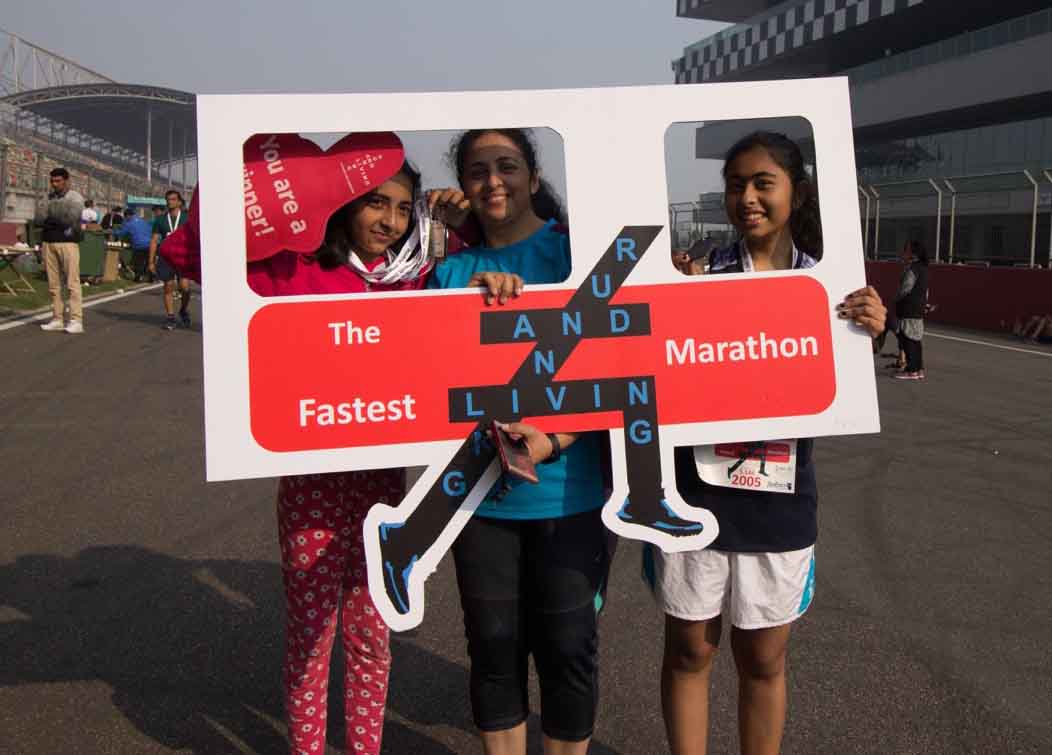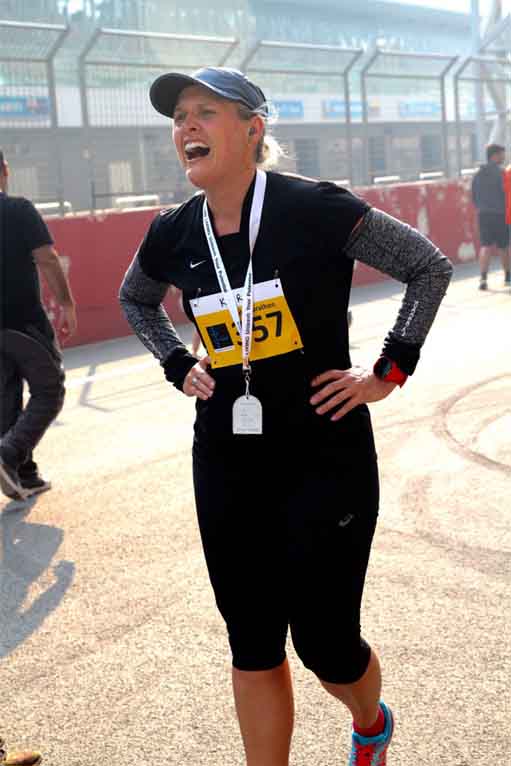 Women on the Run
Women on the Run
Men and women are different – men have more muscle mass- that means more haemoglobin to carry oxygen to the red blood cells to help them run more efficiently, they have less body fat – approx 15% to a woman’s 27% and their hearts are physically bigger – though they may not seem more large hearted!!
All these mean that they are more physically efficient and for years, apparel and shoes designed for them, with women getting just a smaller size of the same.
Luckily this has all changed now.
Despite being very recent entrants in the competitive running arena, women runners have done very well for themselves. The pioneers,their inspiration has reached us all and released us. Women now outnumber men in several races around the world.
An Indian woman who has done the IronMan! Read on about Anu Vaidyanathan at
Some interesting historical facts include....
1928 - Women first allowed compete in Olympic Track and Field events. Reports of fainting caused the event to be dropped till 1960
1966 – Roberta Gibb“unofficially” runs the Boston Marathon with a time of 3:21:40
1967 – Kathrine Switzer runs the Boston Marathon with an “official” number
1970 - The Road Runners Club of America holds first championship marathon for women 1971 – Adrianne Beams becomes the first woman to run a marathon in under 3 hours with a time of 2:46:30
1971 - Boston & New York City marathons officially open for women
1977 - First sports bra created by combining two male athletic supporters and a bit of thread
1984 - Women’s marathon added to Olympic Games and won by Joan Samuelson in 2:24:52
2003 – Pam Reed wins ultra marathon by becoming the overall winner in the 135-mile Badwater Ultra Marathon ...and for more facts check Run like a girl
It is hard to believe that one tiny chromosome can make such a difference. There are differences in the anatomical structure, muscular strength and flexibility of men and women. Although deep inside the muscle cells and throughout the cardiovascular system there is no sex discrimination, our reproductive systems cause us to face some problems that men don’t have to worry about at all.
During pregnancy a lot changes – in contrast to how we trained before pregnancy, when we are tired, we stop, we should not get overheated during exercise and we should never run or exercise out of breath. ALWAYS discuss your wish to exercise with your health professional before doing any exercise however fit you are. Never exercise for longer than 40 minutes at a time unless you have discussed it with a health professional. As a general rule the heart rate should stay below 140 beats per minute, but more importantly we should be able to carry on a conversation during running. The talk test makes us our own best doctors. Never exercise in hot conditions unless there is adequate ventilation. Always stay hydrated during exercise. If weight training, use machines where possible and do not use free weights. Do not do strenuous stomach exercises. Do not exercise in a lying down position after the first trimester. This can block an adequate blood supply to the baby. Exercise regularly (3 to 4 times a week) rather than intermittently. If you are comfortable, the baby is comfortable. Read about running during pregnancy in the book Running And Living
Post-delivery:
 Take your time to get back on the trail, and maybe try a treadmill in a more controlled environment to start with. It is reasonably safe to start running after four weeks of a normal delivery and 10-12 weeks after a C-section, though go easy at first. Pelvic floorexercises and abdominalexercises help in preventing back problems.
Take your time to get back on the trail, and maybe try a treadmill in a more controlled environment to start with. It is reasonably safe to start running after four weeks of a normal delivery and 10-12 weeks after a C-section, though go easy at first. Pelvic floorexercises and abdominalexercises help in preventing back problems.
DSC 1306The good news is that it will have limited impact on your performance. In fact, women have run well and even set records during all phases of the menstrual cycle. You may find that running can actually improve your mood and alleviate physical symptoms before and during your period. Just make sure you carry an extra tampon on your long runs during that time of the month. Yes, tampons are highly recommended over pads for comfort and to avoid chafing.
Running helps in keeping oestrogen levels steady and even helps reduce menstrual cramps. In case of severe cramps, check with your doctor for OTC medication or calcium and magnesium supplements so that you can manage the cramps and start running.
Reduce pre menopausal breast cancer risk – run for it!
Safety Tips:
With our busy lives we find that we find time only in the early mornings or late evenings. There are some precautions we can take. Run against the traffic as it is easier to avoid traffic if you can see it coming up ahead. Avoid roads with no sidewalks. There is strength and safety in numbers, so try and run with a buddy or better still in a group. Run without music as cutting off your hearing leaves you at a disadvantage.
Wearing the right sports bra is critical to a comfortable run. It’s important that you try on bras for fit and comfort, so try to do your shopping in person. There are high-impact sports bras that are designed especially for runners. Coolmax and dri-fit are great fabrics for bras – cotton bras tend to stay wet and get very uncomfortable. Seamless bras prevent chafing. When you try on bras, jog in place or do jumping jacks to test their support before you buy. While you’re bouncing up and down, the bra should minimize breast movement. For most women,,the sports bra is the most important piece of equipment they buy. However, many women still aren’t getting what they need out of their bra. This becomes especially problematic for women with large breasts. For some women, Enell sports bras have become the solution. Unfortunately, this is not available in India, but for those of you who travel, it may be something you want to try out. Also See
Please remember that weight loss, weight gain, pregnancy etc can affect breast size and shape and therefore also a changed requirement for your sports bra. These will also stretch out over time and a good thumb rule is for the bra life to be between 6 months to a year depending on frequency of use and intensity of running, beyond which the materials begin to break down
Apart from this check, out some more on what this wonder drug of running, can do for you
If you would like to receive a free brief monthly mailer on news, stories, information and fun stuff on running – drop us a mail at contactus@runningandliving.com and send us your name and city of residence”
Happy Running

 contactus@runningandliving.com
contactus@runningandliving.com click here
click here click here
click here